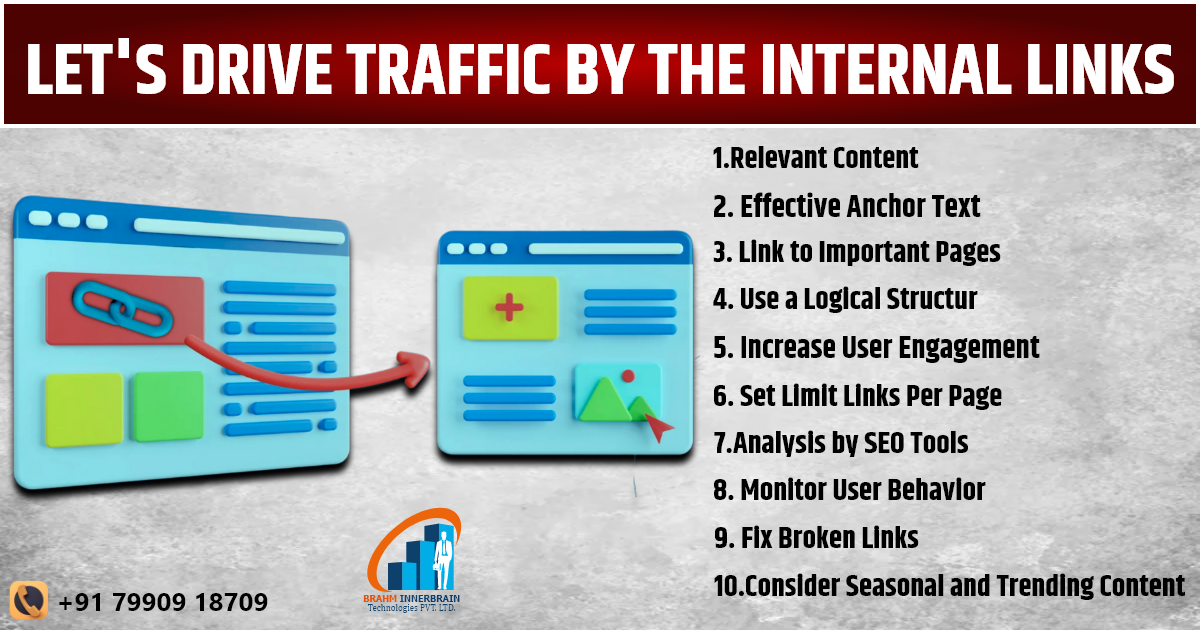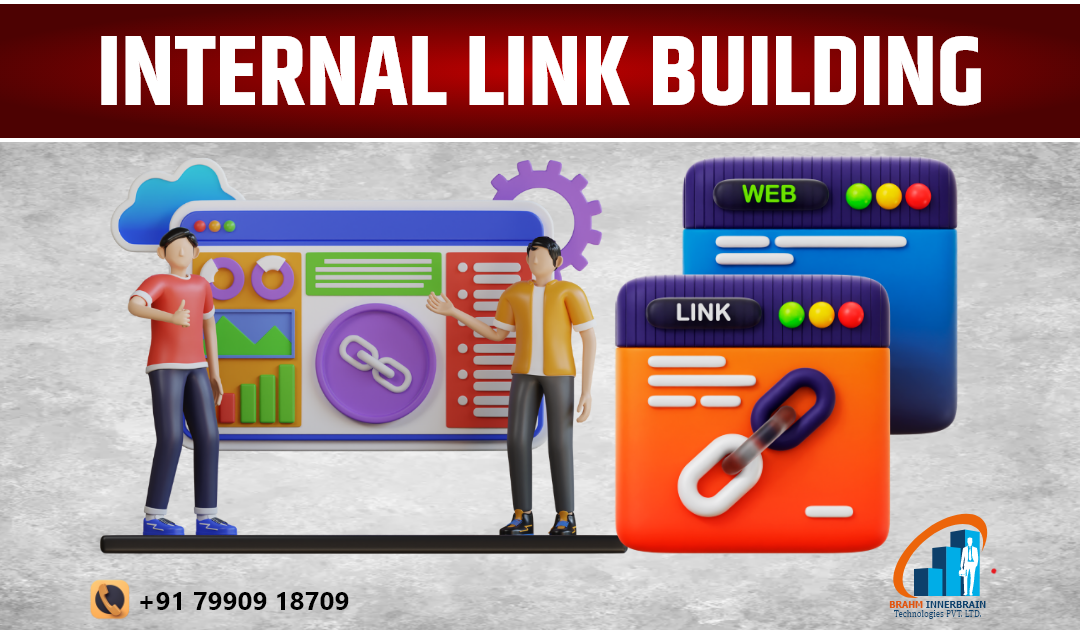Internal links help search engines crawl your website more effectively and significantly. internal links can guide search engines to drive more links for orgenic result.Well-structured internal links improve site navigation, making it easier for users to find related content. Internal links help users uncover related articles or products they might not have found otherwise.

Let’s Drive Traffic by the Internal links :-
1. Relevant Content
Relevant content in your particular niche must be related to user queries. You can use targeted keywords, long-tail keywords, Questions and Answers, FAQs, and many more, which are often favoured by search engines. Relevant content can generate engagement through likes, comments, shares, etc. Google search engine indicates the quality of content that is relevant to user queries. Content also depends on your website theme and structure.
2. Effective Anchor Text
You can use particular keywords in your anchor text to clarify your niche. Google search crawler looks for relevant and effective anchor text to understand particular nich about the content page. A descriptive anchor text is considered more organic and relevant. Google bot considers that anchor text provides a good user experience. If anchor text appears in links provided by high-authority sites then it boosts the credibility and ranking opportunities of your linked page. Anchor text can lead to click-through rates, traffic, user engagement, keyword volume, search rankings, etc.
3. Link to Important Pages
Identify pages that are critical for conversions and create multiple internal links pointing to them. If you publish new content, link to it from your existing popular or high-traffic pages to help generate traffic and authority. Authoritative pages give more visibility about your SEO. You can utilize sidebars and footers to link your blog page with important pages. You can use tools to identify links that are associated with your content.
4. Use a Logical Structure:-
You can Develop a clear site structure with a logical method to make it easy for users and search engines to navigate.
There are many structures in web development including Hierarchical Structure, Top-Level Pages, Use of Categories, FlatStructure, and Responsive Design. A logical website structure is benificial for both user experience and SEO!
5. Increase User Engagement
You can suggest some Related Articles at the end of blog posts and article posts for reading purposes. You can maintain a good user experience and encourage you to explore more content on your site. You can add some related topics through the “You Might Also Like” section that dynamically suggests related content based on user behaviour.
6. Set Limit Links Per Page
Internal links are beneficial for specific purposes, you can make balance in generating links to make links helpful and relevant. You can monitor the performance of linked pages to see if internal links are helping to drive better traffic or conversions. You should try the other relevant links to maintain visibility on your website. If content has been moved or deleted, Redirects is appropriate for a better comeback.
7. Analysis by SEO Tools
You can use some effective SEO tools like Screaming Frog, Ahrefs, or SEMrush to assess your existing internal links and identify opportunities for improvement. Monitor the performance of linked pages to see if internal links are helping to drive traffic or not.
8. Monitor User Behavior
To monitor user experience and behaviour you can analyze by tools including Google Analytics, Hotjar, Crazy Egg, Adobe Analytics and many more. It would monitor user behaviour, choice, taste, experience, niche, requirements etc. The analytics tools suggest website traffic, user demographics, heatmaps, user feedback, user engagement, deep insights etc.
9. Fix Broken Links
You can Periodically check broken links and fix any broken internal links to ensure a smooth user experience and retain SEO value.
You can determine seo values and rules to appropriate calculation of links. You should take redirects for moved or deleted content.
Use some Broken Link Checker(Online Tools) to identify broken links in your website page. If the content is no longer relevant, you may choose to remove the link entirely or replace it with an updated reference.
10. Consider Seasonal and Trending Content
Update to seasonal content or trending topics that may attract more traffic and visibility to your website. Provide some content that aligns with the themes of the upcoming season or reinforces trending topics. It may help to drive traffic to various links on your website.

